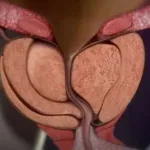Attraction to Detraction: Top 1 Remarkable Journey of Brain-Damaging Habits and How to Break Free

Table of Contents
ToggleBrief overview of Brain-Damaging Habits
In the intricate tapestry of daily life, our habits play a significant role, shaping not only our routines but also influencing the health of our brains. Brain-damaging habits encompass a range of behaviors that, over time, can lead to adverse neurological effects. These habits may include excessive screen time, substance abuse, poor sleep patterns, and more. Understanding the impact of these patterns on our cognitive well-being is crucial for navigating the complexities of modern living. From subtle alterations in neurotransmitter levels to structural changes in the brain, brain-damaging habits can have far-reaching consequences. This brief overview aims to shed light on the importance of recognizing and addressing these habits, emphasizing the need for proactive measures to safeguard our brain health.
How to break free from brain-damaging habits
Brain-damaging habits can significantly impact cognitive health, leading to potential long-term consequences. Managing stress is a crucial aspect of breaking free from these detrimental practices. Chronic stress has been linked to cognitive decline, and adopting stress-management techniques, such as mindfulness and deep breathing exercises, can be pivotal in safeguarding the health of the brain.
In addition to stress management, reducing sitting time emerges as another key strategy. Prolonged periods of sitting have been associated with adverse effects on cognitive function. Implementing a routine of standing up and moving every 15 to 30 minutes can help mitigate the negative impact of sedentary behavior, promoting not only physical well-being but also cognitive health.

Socialization plays a vital role in breaking free from brain-damaging habits. Isolation can contribute to stress and negatively affect mental well-being. Making socializing a priority can provide emotional support, foster a sense of connection, and contribute to overall cognitive resilience. Engaging in meaningful conversations and spending time with loved ones can be instrumental in the journey towards breaking free from detrimental habits.
Furthermore, prioritizing quality sleep is integral to preserving cognitive health. Sleep is a restorative process for the brain, and insufficient or poor-quality sleep can exacerbate the effects of brain-damaging habits. Establishing a consistent sleep routine, creating a conducive sleep environment, and addressing any sleep disorders can contribute to cognitive well-being and aid in the recovery process.
Sustaining these positive lifestyle changes is crucial for shielding cognitive abilities and potentially lowering the risk of conditions like dementia. By incorporating stress management, reducing sedentary behavior, prioritizing social connections, and ensuring quality sleep into daily routines, individuals can take proactive steps towards breaking free from brain-damaging habits, fostering a healthier and more resilient brain.
What are some brain-damaging habits?
Various behaviors can take a toll on our cognitive well-being, constituting what are commonly referred to as brain-damaging habits. One of the most recognized culprits is heavy drinking, which can lead to neurodegeneration and impair cognitive functions over time. Smoking and the use of tobacco products are also significant contributors, as they introduce harmful chemicals that can adversely affect the brain’s structure and function.
Inactivity is another detrimental habit that can result in cognitive decline. A sedentary lifestyle not only impacts physical health but has been linked to reduced cognitive abilities. Poor sleep quality further exacerbates the situation, as insufficient or disrupted sleep hinders the brain’s ability to regenerate and consolidate memories, ultimately impacting overall cognitive function.

The consumption of excessive amounts of sugar and processed foods is yet another habit that can negatively impact the brain. Studies suggest a correlation between a diet high in sugar and cognitive impairments. Additionally, constant exposure to high levels of stress can have detrimental effects on the brain, leading to heightened cortisol levels and impairing cognitive performance over time.
Dehydration is often overlooked, but it can influence brain function significantly. Even mild dehydration has been associated with decreased cognitive performance and increased perception of task difficulty. Neglecting mental stimulation, such as engaging in intellectually challenging activities, can also contribute to cognitive decline by failing to exercise the brain and promote neuroplasticity.
Severing social ties is a less obvious but impactful brain-damaging habit. Social isolation has been linked to increased stress levels and heightened risk of mental health issues, which, in turn, can negatively affect cognitive health. On the contrary, maintaining strong social connections is associated with better cognitive function and a lower risk of cognitive decline.
To counteract the impact of these brain-damaging habits, adopting healthy behaviors is essential. Regular exercise has been shown to enhance brain function, lower inflammation, and contribute to overall cognitive health. A lifestyle that prioritizes proper nutrition, quality sleep, and stress management can collectively safeguard the brain and promote general well-being. Developing and maintaining these healthy behaviors is not only beneficial for physical health but also crucial for preserving cognitive abilities and fostering a resilient and thriving brain.
Can you suggest any mental stimulation activities?

Engaging in mental stimulation activities is a proactive way to enhance cognitive health and promote overall brain function. Jigsaw puzzles stand out as an excellent brain-stimulating activity due to their multifaceted nature. Completing a jigsaw puzzle requires the utilization of various cognitive processes, such as visual-spatial reasoning, pattern recognition, and memory. This not only provides an enjoyable pastime but also serves as a workout for the brain, contributing to improved cognitive health.
Card games, including poker, gin rummy, bridge, and solitaire, offer another avenue for mental stimulation. These games challenge memory, strategic thinking, and decision-making skills. Regular play can contribute to maintaining cognitive sharpness and may even have a positive impact on overall brain function. Additionally, activities like reading, solving crossword puzzles, learning new dance steps, expanding one’s vocabulary, and using brain-training apps can stimulate different brain regions, offering a diverse and holistic approach to mental exercise.
Learning new skills is a dynamic way to keep the mind flexible and active. Whether it’s picking up painting, mastering a musical instrument, or acquiring a new language, the process of learning itself stimulates various cognitive functions. This continuous mental engagement helps maintain cognitive flexibility and adaptability. Furthermore, frequent social engagements play a crucial role in improving mental well-being. Social interactions not only provide emotional support but also stimulate various aspects of cognitive function, contributing to a more vibrant and resilient mind.
What are some brain-training apps?
Brain-training apps have become popular tools for enhancing cognitive abilities through engaging and targeted activities. Lumosity and Peak are prominent examples, utilizing brain games to improve various aspects of cognitive function. Lumosity, for instance, offers exercises that specifically test processing speed, memory, and problem-solving skills. Users can engage in challenges designed to stimulate different cognitive processes, providing a comprehensive workout for the brain. Peak takes a similar approach, offering a variety of workouts specifically focused on memory and mental agility. These apps offer accessible and convenient ways for individuals to incorporate brain training into their daily routines.
Elevate is another notable brain-training app that takes a holistic approach by combining tailored exercises with meditation. The app aims to enhance skills related to writing, reading, listening, and math, making it a comprehensive tool for overall cognitive development. By incorporating meditation into the training, Elevate recognizes the interconnectedness of mental well-being and cognitive function, providing users with a well-rounded approach to brain training.
Fit Brains Trainer is designed to focus on multiple cognitive aspects, including memory, mental agility, and problem-solving. The app provides a range of exercises that challenge these cognitive functions, adapting to the user’s performance to ensure a personalized and effective training experience. Fit Brains Trainer reflects the evolving landscape of brain-training apps, acknowledging the importance of addressing various cognitive domains for a more well-rounded approach to cognitive enhancement. These apps collectively offer users accessible and engaging ways to actively participate in their cognitive health and well-being.
Strategies to overcome brain-damaging habits
What are 5 signs your brain is in trouble?
Recognizing signs that indicate potential issues with your brain health is crucial for early intervention and care. Here are five signs that your brain might be in trouble:
-
Sudden Confusion:
- Abrupt onset of confusion or disorientation can be a red flag. If you find yourself suddenly unable to grasp your surroundings, understand conversations, or recall basic information, it could indicate an underlying issue affecting cognitive function.
-
Difficulties Speaking:
- Difficulty in articulating thoughts, slurred speech, or an inability to express yourself coherently may be indicative of a problem in the brain. Language difficulties can arise from various neurological conditions, and if persistent, they warrant attention and assessment.
-
Vision Changes:
- Any sudden changes in vision, such as blurred vision, double vision, or partial vision loss, may signal a problem with the optic nerves or other parts of the brain responsible for visual processing. Regular eye check-ups can help distinguish between ocular issues and those related to the brain.
-
Problems with Balance and Coordination:
- Impaired balance and coordination can be signs of neurological dysfunction. Frequent stumbling, lack of coordination in simple tasks, or feeling unsteady on your feet may point to problems in the brain’s regions responsible for motor control.
-
Severe Headaches and Cognitive Abnormalities:
- Persistent, severe headaches, especially those accompanied by cognitive abnormalities such as memory loss, difficulty concentrating, or changes in mood and behavior, can indicate a range of issues, from migraines to more serious neurological conditions. These symptoms should not be ignored, as they may signify an underlying problem affecting brain health.
These signs collectively suggest the possibility of a blood flow issue to the brain or other neurological conditions that can impact cognitive function. Seeking prompt medical attention is crucial, as some brain disorders require emergency care for effective intervention and management. Monitoring changes in cognitive abilities, communication, vision, balance, and headaches can aid in early detection and better outcomes for potential brain-related issues.
How can I improve my balance and coordination skills?
Improving balance and coordination skills is essential for overall health and functional mobility. Incorporating a variety of activities into your routine can target different aspects of these skills. Here are some effective ways to enhance your balance and coordination:
Engage in specific balance activities such as “rock the boat,” where you shift your weight from side to side, flamingo stands that focus on single-leg balance, tightrope walks that simulate walking along a narrow line, and hand-eye coordination exercises like catching and throwing. These activities challenge your body’s spatial awareness and proprioception, contributing to improved balance and coordination.
Include dynamic exercises that enhance timing, rhythm, and coordination, such as jumping rope. Jumping rope not only boosts cardiovascular health but also hones your timing and coordination skills. Planking is another beneficial exercise that not only strengthens core muscles but also requires stability and balance. These exercises collectively contribute to better overall coordination and stability, promoting effective movement and reducing the risk of injuries.
Incorporate mind-body techniques like Pilates, Tai Chi, and yoga into your routine. These practices focus on controlled movements, breathing, and mindfulness, enhancing both physical and mental aspects of coordination. Visual tracking exercises, where you follow a moving object with your eyes, also contribute to improved coordination. By incorporating a combination of these activities into your fitness regimen, you can work towards a well-rounded improvement in balance, coordination, stability, and core strength, leading to enhanced overall well-being and functional mobility.
What is neuroplasticity and breaking bad habits?
Neuroplasticity is the remarkable ability of the brain to adapt, change, and reorganize itself by forming new neural connections throughout our lives. This dynamic process allows the brain to modify neural pathways in response to experiences and environmental changes. When it comes to breaking bad habits, understanding and leveraging neuroplasticity becomes pivotal. Instead of being fixed and rigid, the brain’s structure is malleable, providing opportunities for individuals to reshape their habits for the better.
Brain-damaging habits, often ingrained over time, create specific neural pathways that contribute to their persistence. Recognizing the detrimental impact of these habits on overall well-being is the first step toward utilizing neuroplasticity for positive change. By intentionally substituting unhealthy routines with healthier alternatives, individuals can actively engage neuroplasticity in restructuring their brain connections. This process involves rewiring the brain to form new, constructive habits, ultimately leading to improved mental and physical health.
Breaking brain-damaging habits involves a conscious effort to challenge the existing neural pathways associated with these behaviors. Repetition and consistency play vital roles in this process, as reinforcing new, positive habits gradually weakens the neural connections linked to unhealthy practices. Whether it’s substituting sedentary activities with regular exercise, opting for nutritious food choices over sugary snacks, or incorporating stress-relief techniques instead of relying on harmful coping mechanisms, each intentional choice contributes to reshaping the brain’s neural landscape.
It’s crucial to understand that the brain does not discriminate between positive and negative habits; it adapts to the patterns we reinforce. Therefore, consciously fostering positive habits through the lens of neuroplasticity can empower individuals to overcome brain-damaging habits. This approach not only addresses the immediate challenges associated with breaking bad habits but also sets the foundation for long-term behavioral change.
In the journey to break brain-damaging habits, patience and persistence are key. The brain’s plasticity allows for gradual transformation, and acknowledging small victories along the way is essential for sustained progress. As new, positive habits become ingrained, the brain continues to adapt, solidifying these healthier neural connections. Leveraging neuroplasticity in breaking bad habits offers a hopeful and empowering perspective, emphasizing that change is not only possible but also a fundamental characteristic of the dynamic and resilient human brain.
What are some common habits people try to form?
In the pursuit of a balanced and fulfilling life, individuals often aspire to cultivate a set of positive habits that contribute to their overall well-being while steering clear of brain-damaging habits. A cornerstone habit that many endeavor to form is maintaining a healthy diet. Making thoughtful and nutritious food choices not only impacts physical health but also plays a crucial role in promoting mental well-being. It’s essential to avoid brain-damaging habits like excessive consumption of sugary and processed foods, which have been linked to cognitive decline and other health issues.
Regular exercise is another widely sought-after habit, offering numerous benefits for both physical and mental health. Engaging in brain-boosting activities like aerobic exercises not only supports cardiovascular health but also fosters the growth of new neurons, enhancing cognitive function. On the flip side, neglecting physical activity can be considered a brain-damaging habit, as it may contribute to a sedentary lifestyle linked to various health challenges, including cognitive decline.
Aiming for adequate and quality sleep is a common habit that people strive to form, recognizing its importance for cognitive function and overall well-being. Conversely, habits like staying up late with electronic devices can disrupt sleep patterns and be considered brain-damaging, as they negatively impact the brain’s ability to rest and regenerate during the night.
Mindfulness practices, such as meditation and deep breathing exercises, are also sought after as habits that cultivate mental clarity, stress reduction, and emotional resilience. This contrasts with brain-damaging habits such as excessive alcohol consumption or substance abuse, which can impair cognitive function and contribute to mental health issues.
Effective time management and goal-setting are habits that complement each other, providing individuals with the tools to structure their days purposefully and work towards achieving their aspirations. Distraction-prone habits, like excessive use of social media or constant multitasking, can be considered brain-damaging as they may hinder focus, productivity, and overall cognitive performance.
Hydration, often overlooked, is a fundamental habit that people consciously try to incorporate into their daily lives. Staying adequately hydrated is essential for physical health, cognitive function, and maintaining overall vitality. Conversely, habits like excessive caffeine consumption or relying on sugary beverages can be detrimental, leading to dehydration and negatively impacting brain function.
Expressing gratitude daily is a habit rooted in positive psychology, contributing to a positive mindset, improved relationships, and heightened life satisfaction. Conversely, negative thought patterns and self-critical habits can be considered brain-damaging, as they may contribute to stress, anxiety, and other mental health challenges.
Lastly, regular exercise stands as a multifaceted habit that encompasses physical health, mental well-being, and stress management, while avoiding brain-damaging habits like a sedentary lifestyle. Engaging in consistent physical activity not only promotes cardiovascular health and strength but also releases endorphins, contributing to a positive mood and reduced stress levels. These common habits, when mindful of steering clear of brain-damaging behaviors, collectively reflect a holistic approach to personal well-being and the cultivation of positive routines.
Conclusion:
In conclusion, our exploration has underscored the profound impact of habits on our cognitive and overall well-being, emphasizing the importance of cultivating positive routines while steering clear of brain-damaging habits. The intricate interplay between neuroplasticity and behavioral choices allows us to actively shape the neural landscape of our brains, fostering resilience and adaptability. Recognizing the significance of avoiding brain-damaging habits, such as excessive alcohol consumption, sedentary lifestyles, and poor dietary choices, becomes paramount in our pursuit of optimal mental and physical health.
The journey to break free from brain-damaging habits involves a conscious effort to challenge existing neural pathways associated with detrimental behaviors. By understanding the plasticity of our brains, we empower ourselves to reshape these neural connections through intentional choices and consistent efforts. Through mindfulness, positive reinforcement, and the cultivation of healthier alternatives, we can dismantle the negative loops created by brain-damaging habits, paving the way for a brighter, more resilient cognitive future.
As we explored common habits individuals strive to form, the contrast between positive routines and brain-damaging habits became evident. The conscious choices we make in areas such as diet, exercise, sleep, and mindfulness have a direct impact on our brain health. Fostering habits that prioritize cognitive well-being while avoiding those that compromise it is a powerful commitment to our mental resilience and overall quality of life.
Ultimately, the narrative of our habits is a narrative of our brain’s journey. The choices we make today shape the brain we’ll carry into tomorrow. In this ongoing narrative, the awareness of avoiding brain-damaging habits serves as a guiding principle, steering us towards a future where cognitive health is preserved, neuroplasticity is harnessed for positive change, and the potential for a vibrant and resilient brain is realized.
FAQs:
Q: What are brain-damaging habits, and how do they impact cognitive health?
Amswer: Brain-damaging habits refer to behaviors that have adverse effects on the brain’s structure and function, potentially leading to cognitive decline. These habits, such as excessive alcohol consumption and sedentary lifestyles, can impair memory, concentration, and overall brain health.
Q: Can neuroplasticity help in breaking free from brain-damaging habits?
Amswer: Absolutely. Neuroplasticity, the brain’s ability to adapt and reorganize itself, plays a crucial role in breaking free from brain-damaging habits. By intentionally reshaping neural connections through positive behaviors, individuals can leverage neuroplasticity for lasting change.
Q: What are some common signs that indicate brain health may be affected by brain-damaging habits?
Amswer: Signs of potential issues include sudden confusion, difficulties in speech, vision changes, problems with balance and coordination, severe headaches, and behavioral or cognitive abnormalities. Recognizing these signs is crucial for early intervention and care.
Q: How can mindfulness and meditation contribute to breaking brain-damaging habits?
Amswer: Mindfulness and meditation enhance self-awareness, making it easier to identify triggers associated with brain-damaging habits. These practices cultivate mental clarity, reduce stress, and contribute to overall well-being, aiding in the process of breaking free from detrimental behaviors.
Q: What role does exercise play in overcoming brain-damaging habits?
Amswer: Regular exercise not only promotes overall well-being but also positively influences brain function. Engaging in brain-boosting activities like aerobic exercises fosters the growth of new neurons, contributing to enhanced cognitive function and aiding in overcoming brain-damaging habits.
Q: How can individuals actively leverage neuroplasticity to reshape their habits?
Amswer: By consciously substituting unhealthy routines with better ones, individuals actively engage neuroplasticity in restructuring brain connections. Repetition and consistency in reinforcing new, positive habits gradually weaken the neural connections linked to brain-damaging behaviors.
Q: What are some mind-body techniques that can contribute to breaking brain-damaging habits?
Amswer: Mind-body techniques like Pilates, Tai Chi, and yoga involve controlled movements, breathing, and mindfulness, contributing to both physical and mental aspects of coordination. These practices play a role in breaking free from brain-damaging habits by promoting overall well-being and fostering resilience.
You will also Like
- Categories
- All in One, Blogs, Health is Wealth, and Wellness and Mental Health
Previous article
The Extraordinary DeepGO-SE: 5 Life-Changing Tips for Revolutionizing Protein Function Prediction
Next article













